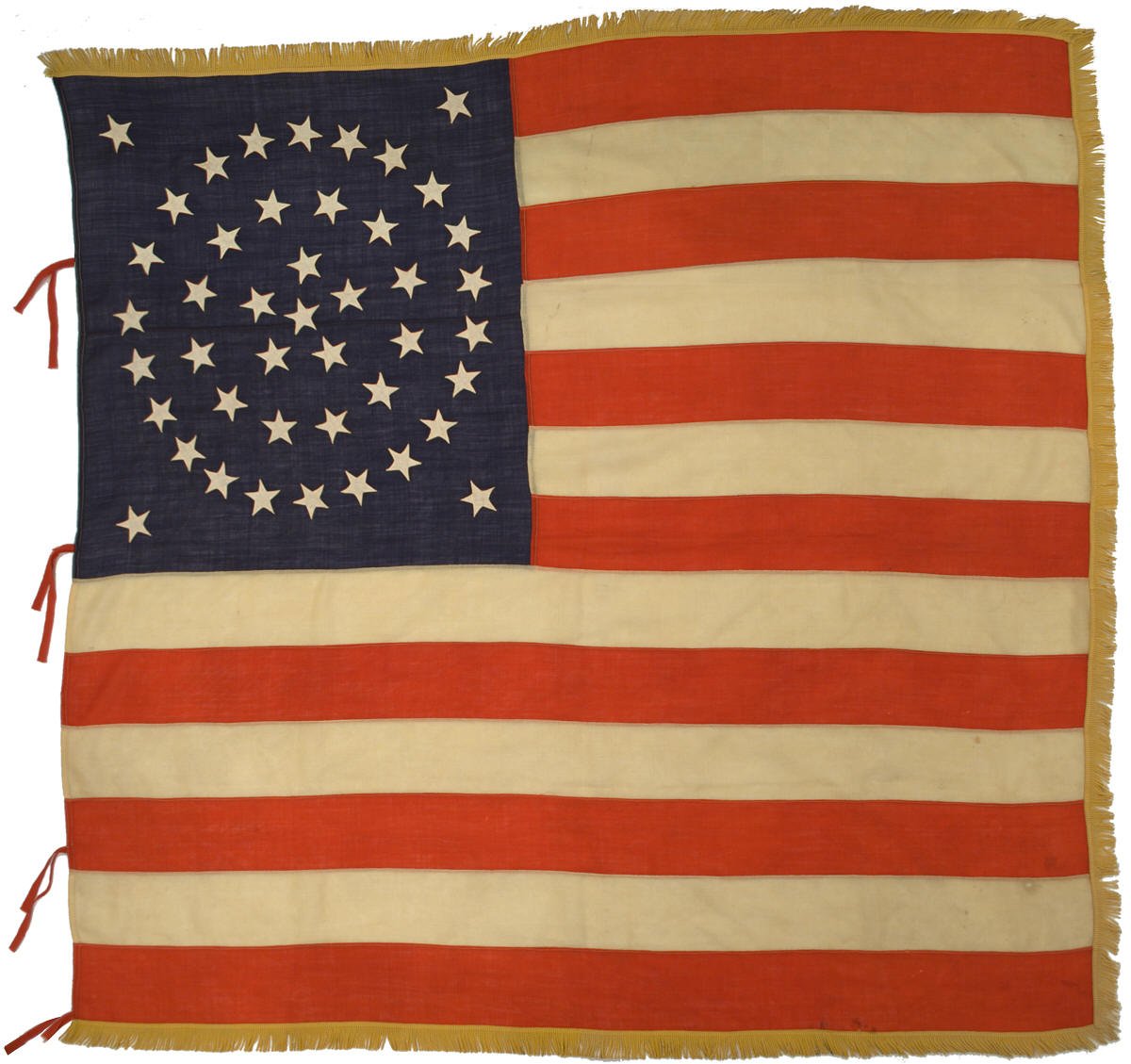
By the last quarter of
the 19th century, the use of medallion flags came to a
relatively abrupt end. The number of states
rapidly, rising from 38 states in November, 1889, to 44
states by July, 1890. Use of the medallion pattern
on flags surged during the Civil War and continued
through the Centennial Period of 38 stars, but
medallions of 44 stars or greater became unwieldy and
are rarely found. This flag is one of the last
great medallion flags, featuring an exceedingly rare
triple medallion. The flag itself is in immaculate
condition. With the exception of a single missing
tie on the top left portion of the hoist, the flag is in
nearly the same condition as it was when made 120 years
ago. The golden twisted fringe and square
proportions of the flag are reminiscent of military
regimental battle flags, and in fact this may have been
used as a military color.
The precision of the
workmanship and the style of the flag are sufficient
evidence that the flag was professionally manufactured.
The flag's cotton muslin stars are expertly machine
stitched to the wool bunting canton, and the wool
bunting stripes are also machine stitched and very
evenly sized. I'm aware of one other flag of near
identical construction to this flag with the same
pattern of stars and square proportions, formerly in the
Thomas Connelly collection (Sotheby's Important
Americana, Lot 149). An auction note for the
Connolly flag notes that "It's rare to see either a flag
of square proportion in this era, or one having a
'medallion' or 'wreath' pattern. This is
particularly true for the most rare 'triple-medallion'
configuration."
Family history for this
flag is as follows:
|
|
"This flag was passed through my family,
starting with my great-grandfather, John Hurbert
Henley, down to my father, Donald Jim McCandlish.
Family history states that this flag flew on 2nd
Street in Casper, Wyoming on July 4, 1891. And
to think that Custer had fought his final stand
less than 15 years before, not much more that a
hundred miles away. My great grandpa
Henley had traveled to Wyoming, by train with
his father to visit family members. When they
left to return to Missouri the flag was
presented to them. It has always been an
important part of my family history. My
father and his grandpa were very close and
shared pride in this flag and their country.
Grandpa Henley passed in his 90's in a nursing
home, in Southern Calif. This bit of my family’s
western history was one of his few remaining
belongings. My father and his fathers before him
were extremely patriotic. He served in the
military and during that time fell in love with
Wyoming as family members before him had. He was
stationed on Pole Mountain, close to Laramie and
Cheyenne. He was Marketing Director for Bell and
Howell in Southern Calif. until 1966. At that
time he went for his dream and moved to Wyoming.
He was active in the American Legion and was
post commander in 1988-89 in Wyoming.
Americanism and flag etiquette were his thing.
He went on to work for 8 years, as Wyoming State
Adjutant for The Legion." |
Overall, this beautiful flag is
one of the most majestic of the last decade of the 19th
century and a fitting tribute to the great state of
Wyoming and the family that preserved it for generations. |

